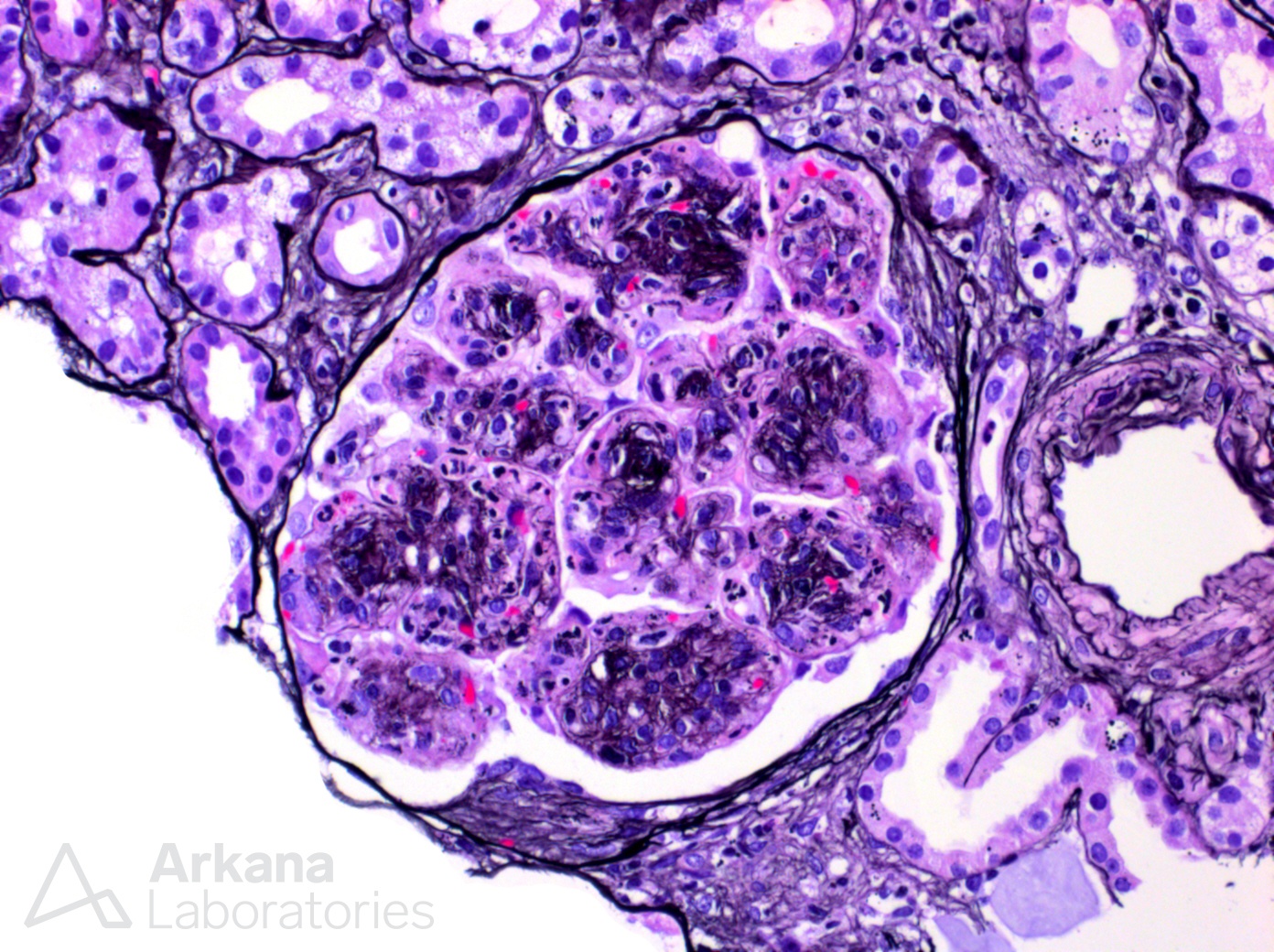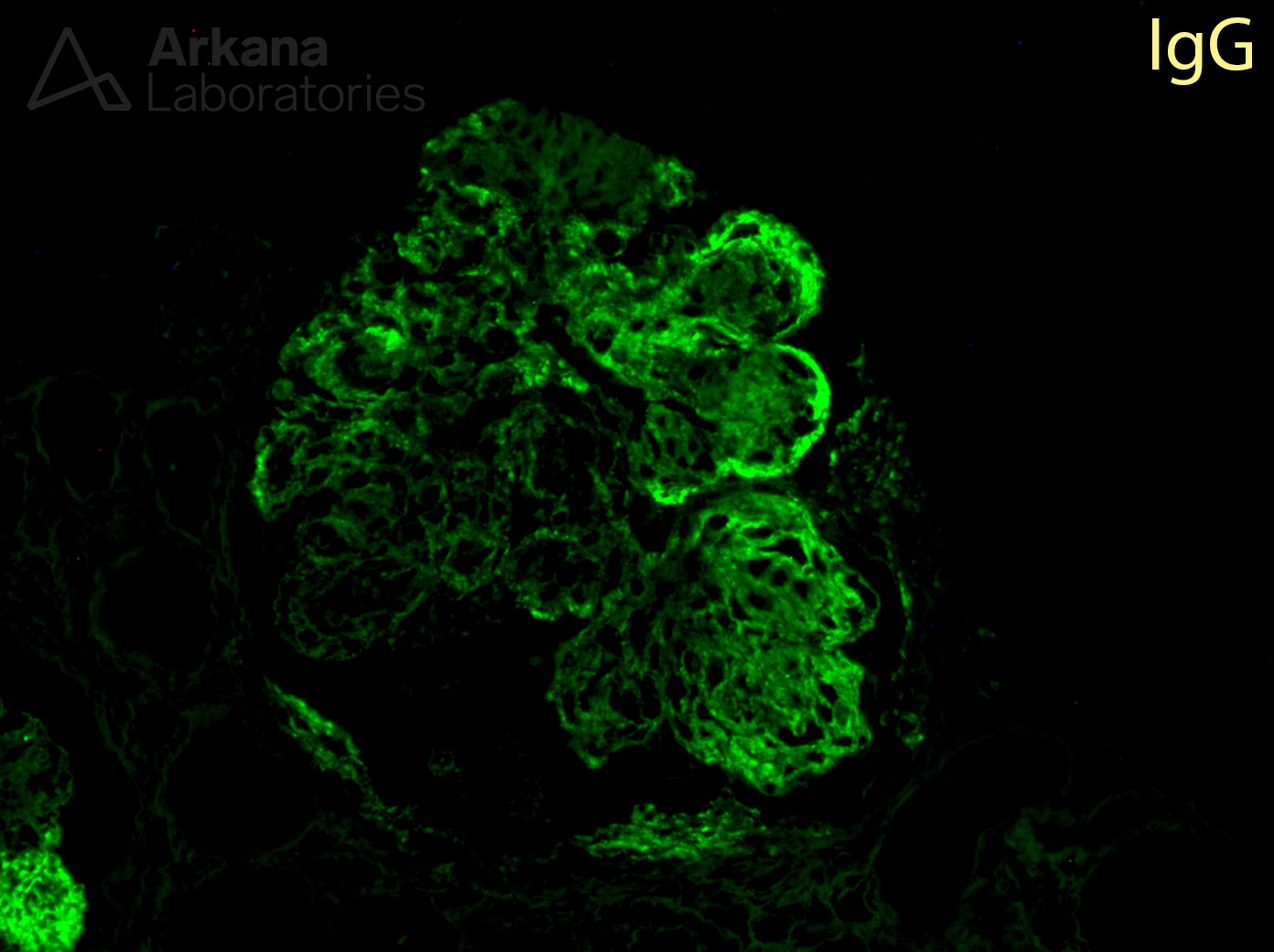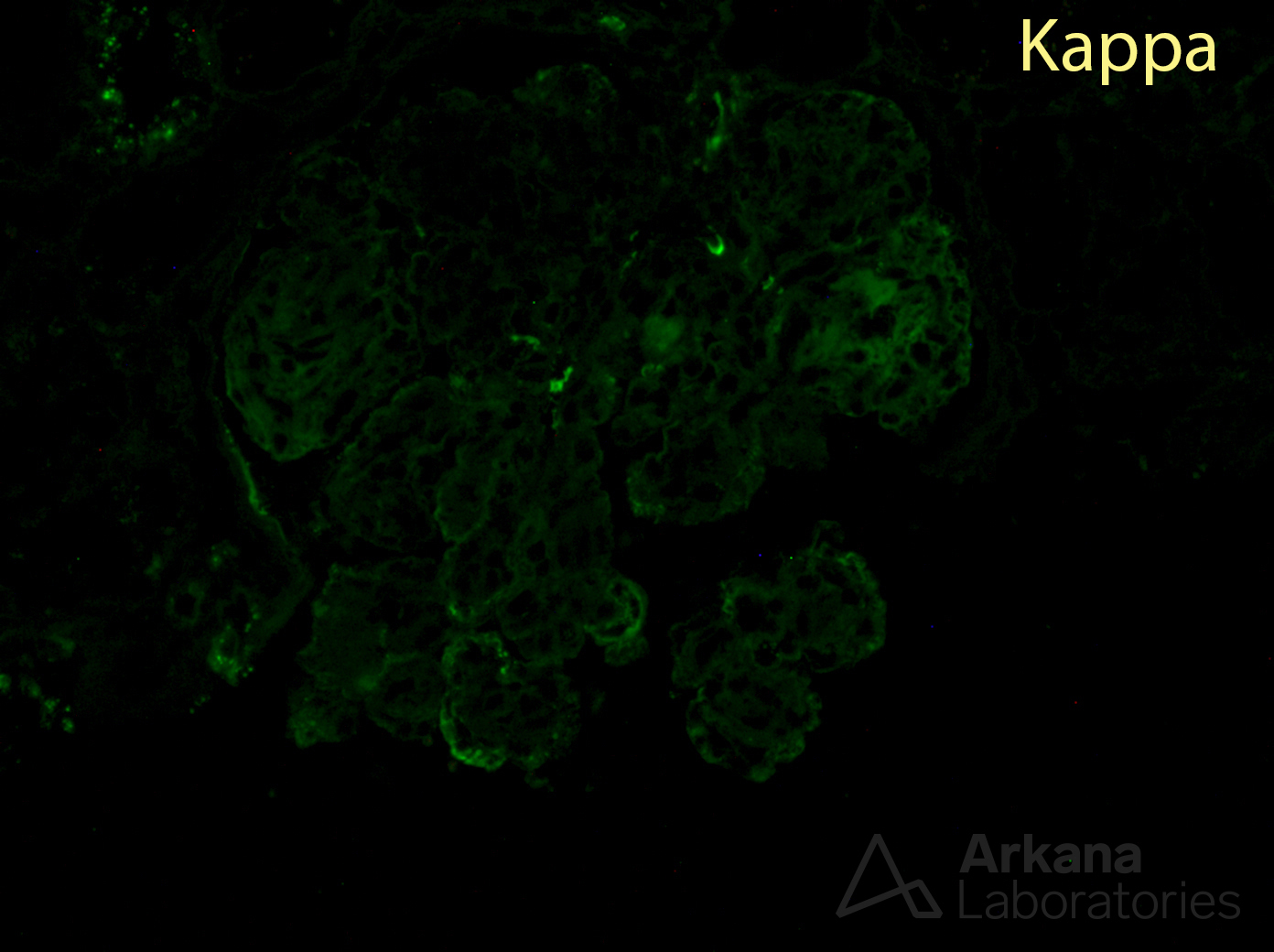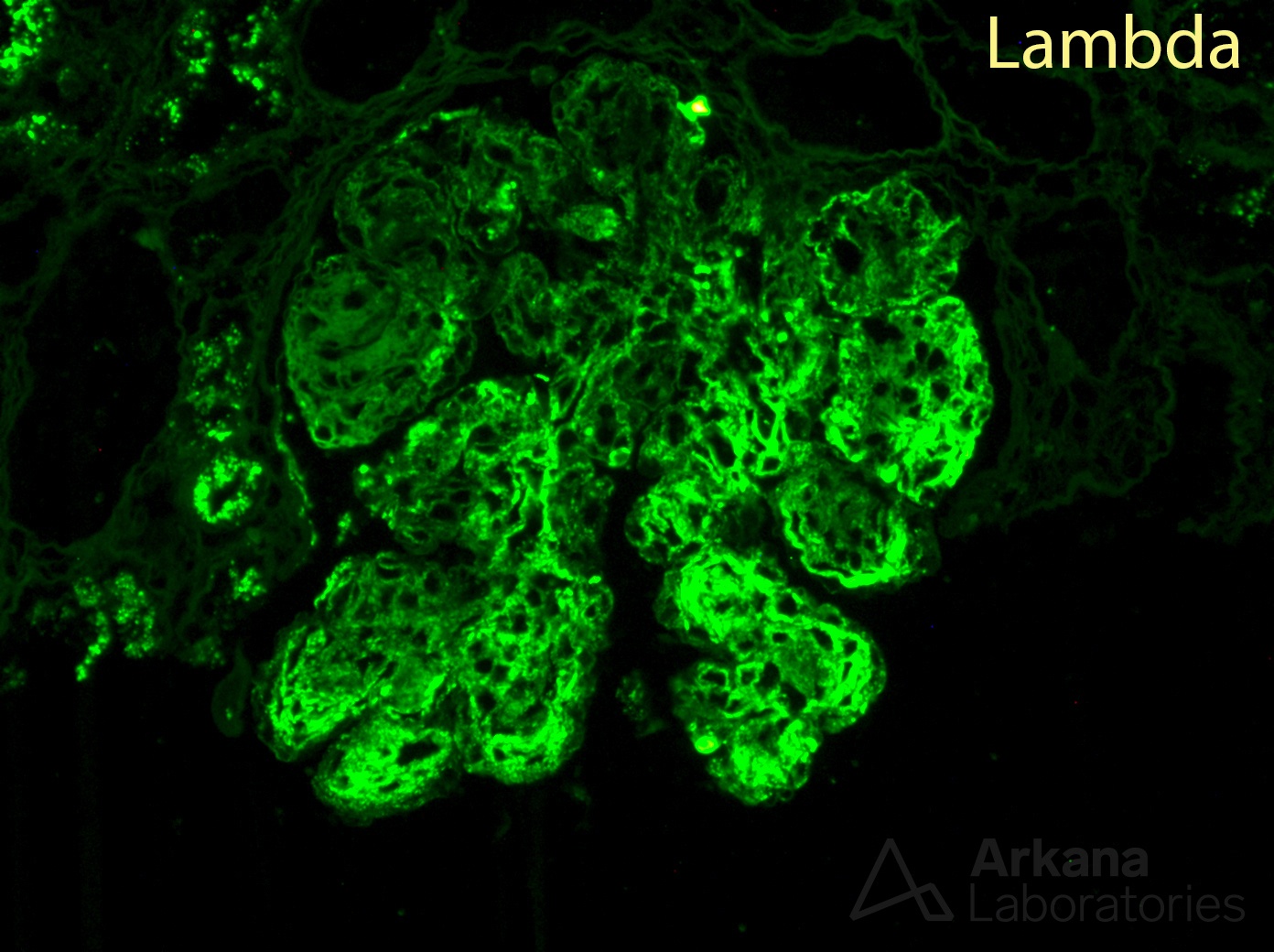What is your diagnosis?
This is a complicated case. The photomicrographs show a membranoproliferative pattern glomerulonephritis (MPGN) with IgG Lambda light chain restriction by immunofluorescence that provides a differential diagnosis (paraprotein-related glomerulonephritis, fibrillary glomerulopathy, renal amyloidosis, type I cryoglobulinemia, and light chain deposition disease) and some clues to its etiology. First, while immune complex deposition is noted within the mesangium and capillary loops on Lambda and IgG, the silver stain shows no loss of argyrophilia within the mesangium, which is unusual for a fibrillary glomerulopathy. Additionally, only 10% of fibrillary glomerulopathy cases show light chain restriction. Next, for renal amyloidosis, this would be unusual as it would need to be an AH/AL type to match the immunofluorescence findings, and amyloid does not typically produce an MPGN pattern. And, for light chain deposition disease, the presence of IgG is unusual and would require a combined heavy and light chain deposition disease which is very rare. Additionally, tubular basement membranes surrounding the glomeruli do not stain by IgG and lambda which would be unusual. Finally, we are left with type I cryoglobulinemia and a paraprotein-related glomerulonephritis. On the silver stain and immunofluorescence, no intracapillary hyaline thrombi are present and typically type I cryoglobulinemia shows IgM staining with a restricted light chain.
To definitively sort out our differential diagnosis we require electron microscopy, additional stains, and clinical correlation. By electron microscopy (not shown) the deposits are electron dense, granular and without substructure or punctate light chain appearance excluding amyloidosis (also Congo red negative), fibrillary glomerulopathy (also DNAJB9 negative) and light chain deposition disease. And, clinically, while the patient has an IgG lambda monoclonal protein of undetermined significance (MGUS) the rheumatoid factor and cryocrit are negative and the patient does not have vasculitis or other signs of cryoglobulinemia. This makes a membranoproliferative pattern paraprotein-related glomerulonephritis the favored diagnosis and in clinical absence of myeloma/lymphoproliferative disease and presence of MGUS, this is a monoclonal gammopathy of renal significance.
Quick note: This post is to be used for informational purposes only and does not constitute medical or health advice. Each person should consult their own doctor with respect to matters referenced. Arkana Laboratories assumes no liability for actions taken in reliance upon the information contained herein.




